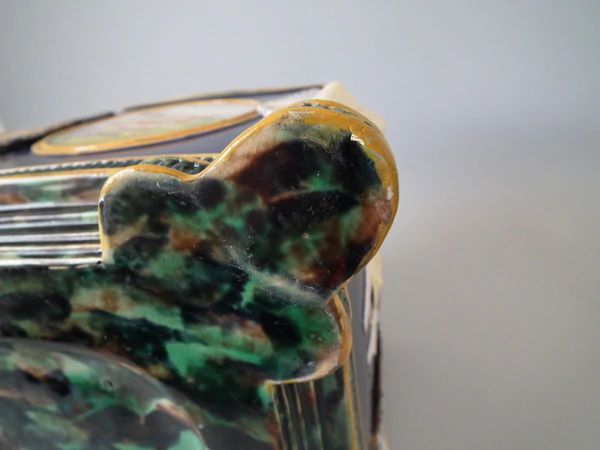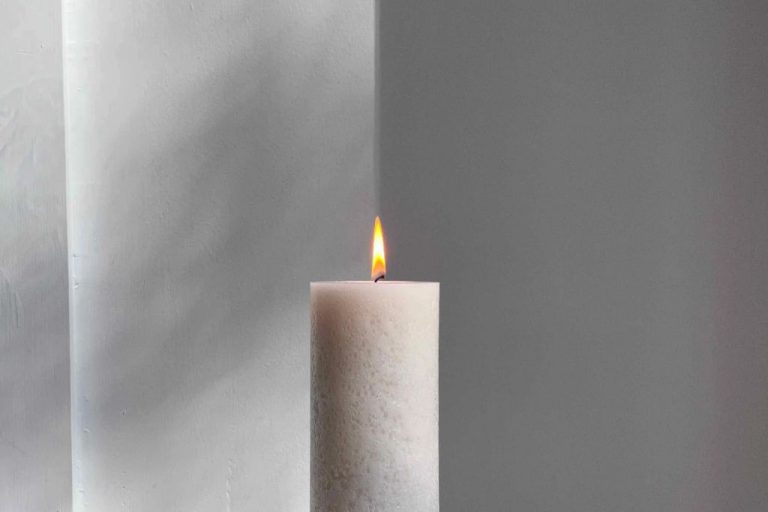Are Ceramic Candle Holders Safe?
Ceramic candle holders are a popular decorative item that allow people to add ambiance and fragrance to their homes with candles. However, there are potential safety concerns when using ceramic materials to hold an open flame. This article will examine if ceramic candle holders are actually safe to use, looking at factors like heat resistance, stability, lead content, and signs of damage that could make them hazardous.
We’ll also provide recommendations for safe use of ceramic candle holders and discuss some alternative safer options. The goal is to inform readers about any risks associated with ceramic candle holders so they can make an educated decision about using them in their homes.
Heat Resistance
Ceramics are known for their ability to withstand high temperatures without degrading. This heat resistance makes them well-suited for use as candle holders. According to Kyocera, ceramics begin to melt at temperatures ranging from 1,600°C to 2,500°C depending on the material composition. In comparison, a candle flame burns around 1,400°C.
The high melting point of ceramic materials like porcelain, stoneware, and earthenware allows them to resist heat from candle flames. While the flame can get hot enough to melt wax and ignite the wick, it does not get hot enough to damage properly fired ceramic candle holders. The thermal shock resistance of ceramics also prevents them from cracking under rapid heating or cooling. As long as the candle holder is not touching the flame and is not already cracked, the ceramic material can withstand the radiant heat of a candle burning inside it without any issues.
Stability
Ceramic candle holders provide stability and help prevent tipping because they are typically made from thick, sturdy materials like stoneware clay, porcelain, or ceramic glazes (South Texas College). The bases are often wide and flat, which lowers the center of gravity and makes them harder to knock over. Ceramic is also less prone to warping from the heat of the candle flame compared to many plastics or metals. Proper ceramic candle holders that are not cracked or damaged are quite rigid and sturdy. This stability prevents the candle from falling or tipping over accidentally, reducing fire hazards.
According to Princeton University’s environmental health and safety office, dried clay materials can be pulverized into a fine dust that poses an inhalation hazard (Princeton University). When working with ceramic candle holders, it’s important to check for any cracks, chips or damage that could indicate brittleness. Intact ceramic with no cracks provides excellent stability. Damaged ceramic may be more prone to breaking or shattering under the heat of a candle flame or if accidentally knocked over.
Lead Content
Some ceramic glazes contain lead that could potentially leach into food and drinks, especially acidic items like tomatoes, juices, and coffee. Lead exposure can cause serious health effects, including developmental problems in children and kidney dysfunction in adults (Fralick, 2016).
The FDA warns that lead-glazed traditional pottery, often imported from Mexico, China, or Europe, poses the highest risk for lead contamination. The lead is trapped in the glaze and unlikely to leach into food under normal use. However, acidic foods and repeated use can cause the glaze to deteriorate and lead to seep out (FDA, 2022).
New ceramic cookware purchased in the United States should meet safety standards for lead. However, vintage or handmade ceramics may not. Testing kits are available to check for lead, but damage from the test may render the dish unsafe for food use after (NPR, 2017).
Recommendations
When choosing ceramic candle holders, look for ones made from high-fired clay or porcelain. These types of ceramic are more resistant to heat and less prone to cracking or breaking when exposed to a candle’s flame. According to experts, oven-safe ceramics are generally safe to use as candle holders (source).
Inspect the ceramic holder carefully before using it with a candle. Check for any cracks, chips or flaws that could weaken the material. Only use holders that are in good condition with no visible damage. Also ensure the holder sits flat and stable on a table or other surface so it cannot be easily tipped over (source).

Choose a candle holder that is an appropriate size and shape for the candle you want to use. There should be at least 1-2 inches of clearance between the top of the candle and the holder so melting wax does not overflow. The holder should be wide enough to catch drippings and provide ventilation underneath. Place the candleholder on a safe, heat-resistant surface.
Never leave a burning candle unattended. Keep ceramic holders away from drafty areas or anywhere they could be knocked over accidentally. Allow the holder to fully cool before moving or touching it after blowing out the candle.
Alternatives
When choosing a candle holder material, ceramic is not the only option. Two other popular materials are glass and metal. Here’s how ceramic compares:
Glass candle holders are another common choice. Like ceramic, glass holders are available in a wide variety of shapes, sizes, and designs. However, glass is much more fragile than ceramic. It can crack or shatter if exposed to rapid temperature changes or direct flame. Glass also tends to be more expensive than ceramic. According to sources, glass candle holders range from $5 for basic designs to over $50 for ornate, hand-blown artisan styles (https://villagecraftandcandle.com/blogs/news/what-type-of-jars-are-best-for-candles).
Metal candle holders made of iron, tin, aluminum, or other metals provide a durable, high-heat resistant option. Metals can safely withstand repeated burning cycles. Metal designs range from vintage to modern. Simple tin votives can cost just a few dollars, while more elaborate wrought iron or cast metal holders run $25-50. However, plain metal lacks the artisan appeal of handmade ceramics and the elegant look of glass.
Ultimately, ceramic candle holders offer an attractive intersection of artistry, durability, affordability, and versatility compared to glass and metal alternatives.
Location
When using ceramic candle holders, it is crucial to be mindful of where you place them. According to the National Candle Association, you should keep burning candles at least three inches apart to prevent them from melting each other or creating drafts that could spread the flame (https://candles.org/fire-safety-candles/). Furthermore, ceramic holders should not be placed near any flammable materials, such as curtains, upholstery, or wood surfaces. The heat from a burning candle can ignite these items and start a house fire. For maximum safety, only use candle holders on non-flammable surfaces like stone, brick, or metal.
When placing ceramic candle holders around your home, be sure to keep them away from areas where they could easily be knocked over by children or pets. An accidental tip-over onto a flammable surface like a rug or tablecloth can quickly cause a dangerous situation. Choose secure locations out of high traffic areas and never leave burning candles unattended.
Supervision
Leaving candles unattended can pose significant risks. According to the New York City Fire Department, unattended candles start many preventable fires that can lead to tragic deaths (https://www.fdnysmart.org/safetytips/dont-leave-candles-burning-unattended/). The National Candle Association warns to never leave a burning candle unattended and to keep candles out of reach of children and pets (https://candles.org/fire-safety-candles/). Experts recommend blowing out candles before leaving a room or going to sleep to avoid potential fires.
It’s best practice to never leave burning candles unattended even for short periods. Fires can start very quickly from tipped over or forgotten candles. Always supervise candles and extinguish them before leaving an area.
Signs of Damage
Ceramic candle holders can develop cracks and chips over time from the repeated heating and cooling of the candle flame. According to Cedar Witch Goods, cracks wider than a piece of paper, chips deeper than 1/8 inch, or any damage that exposes the inside of the ceramic are warning signs the holder needs to be replaced. Discoloration, sooting, or burn marks may also indicate the ceramic is too thin in those areas and at risk of further damage or breakage.
Any chips, cracks, or burn marks along the rim or base of the holder are especially problematic, as these areas bear the most weight and stress. Damage here makes it easier for the holder to break when picked up or knocked over. It’s best to inspect ceramic holders regularly under good lighting and discard any with concerning cracks or damage. Continuing to use significantly damaged holders risks breakage, injury from shattered ceramic, and damage if hot wax spills out.
Conclusion
Ceramic candle holders are generally safe to use for holding candles, as long as some basic precautions are taken. Ceramic is resistant to the heat of candle flames, reducing the risk of the holder cracking or breaking. Look for ceramic holders without lead glaze for the safest option. Place candle holders on sturdy, level surfaces and avoid putting them near combustible materials. Never leave burning candles unattended. Check ceramic holders regularly for signs of damage like cracks or chips, and replace any damaged holders. With proper care and supervision, ceramic candle holders can be a beautiful way to add candlelight to your home safely.


